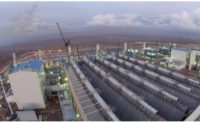Tanzania has revived its controversial 2,100-MW Stiegler's Gorge hydroelectric project on the Rufiji River, which flows through the Selous Game Reserve, one of the world's largest World Heritage sites.
Speaking in late June, President John Magufuli said the project, which has been on and off since the early 1960s, will take up 1,350 sq kilometers of the Selous Game Reserve's 45,000-sq-km footprint.
"I know various obstacles will emerge, but I urge Tanzanians to have a united stand on the project since it will only take up 3% of the Selous Game Reserve," Magufuli said. He did not give project implementation timelines or anticipated costs, although the project is expected to be constructed under an independent-power-producer model. A World Wide Fund for Nature release early this year estimated the cost at $3.6 billion, excluding the cost of further feasibility studies and overruns.
During the 41st World Heritage Committee meeting in early July in Krakow, Poland, Gaudence Milanzi, Tanzania's permanent secretary in the Ministry of Natural Resources and Tourism, noted that the project's agenda was unveiled in the early 1960s. "The Selous Game Reserve was inscribed in the World Heritage list with this agenda already on the table," he observed.
"At the time of inscription of the reserve in 1982, the International Union for Conservation of Nature considered that the Stiegler's Gorge project was of no serious environmental concern, given the vast size of the property," he said.
The 134-meter-tall concrete arch dam will create a 100-km-long, 1,200-sq-km reservoir with a capacity to impound 34 billion cu m of water.
Tanzania has discovered more than 55 trillion cu ft of natural gas. Two gas-fired power plants, Kinyerezi II and Kilwa, are under construction and will add 240 MW and 300 MW of new generation, respectively, by the end of this year. It is not clear what impact the gas-fired power projects will have on the implementation of the ambitious Stiegler's Gorge hydroelectric scheme. Experts note that, compared to hydro-energy plants, planning construction and planning periods for the gas plants are relatively short, with more reliable cost and scheduling estimates.
Tanzania has an electricity generation capacity of under 1,500 MW and an annual power demand growth rate of 15%.



Post a comment to this article
Report Abusive Comment